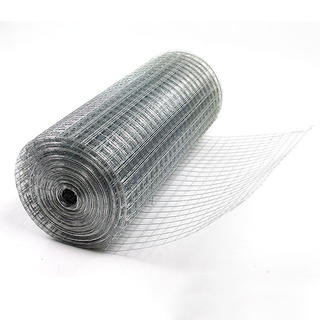Oct . 14, 2024 14:30 Back to list
OEM Twisted Annealed Wire for Superior Performance in Various Applications
Understanding OEM Twisted Annealed Wire A Comprehensive Overview
In the world of wire manufacturing, various specifications and characteristics define the suitability of wire for specific applications. Among these, OEM (Original Equipment Manufacturer) twisted annealed wire stands out due to its unique properties and versatility. This article delves into the significance of OEM twisted annealed wire, its manufacturing process, applications, and why it is favored in numerous industries.
What is Twisted Annealed Wire?
Twisted annealed wire is made by twisting multiple strands of annealed wire together. The annealing process involves heating the wire to a specific temperature and then allowing it to cool slowly. This treatment softens the metal and improves its ductility and electrical conductivity, making it ideal for applications requiring flexibility and resilience. The twisting of the strands not only enhances strength but also improves the wire's structural integrity.
The Role of OEM in Manufacturing
OEM refers to companies that manufacture products or components that are used in another company's end product. In the context of twisted annealed wire, OEM partnerships allow companies to customize wires according to specific project requirements. This can include altering wire diameter, strand composition, twist dimensions, and other physical properties to meet particular industry standards or customer specifications.
The Manufacturing Process
The manufacturing of OEM twisted annealed wire involves several key stages
1. Wire Drawing The process begins with wire drawing, where large metal rods are pulled through progressively smaller dies to achieve the desired diameter. This step is critical in ensuring the wire has the appropriate thickness required for its intended use.
2. Annealing Once drawn to the right size, the wire undergoes annealing. This heating process helps relieve internal stresses and improves mechanical properties. The temperature and time control during this process are crucial to achieving the desired softness and ductility.
3. Twisting Following annealing, the wire strands are twisted together. This can be done in various configurations, including standard two-strand twisting or more complex multi-strand arrangements, depending on the desired properties and application. Twisting can enhance mechanical strength and resistance to fatigue.
4. Finishing Finally, the twisted wire may undergo additional treatments, such as coating or galvanization, to improve its corrosion resistance and overall durability. This finishing step is essential for wires used in outdoor or harsh environments.
Applications of OEM Twisted Annealed Wire
oem twisted annealed wire

OEM twisted annealed wire finds applications across various industries due to its renowned durability and flexibility. Some notable uses include
- Electrical Wiring Its excellent conductivity makes it ideal for electrical applications, including wiring in buildings, vehicles, and electronic devices
.- Construction In the construction sector, it is often utilized in reinforcing structures and components, providing the necessary tensile strength to support various architectural designs.
- Manufacturing OEM twisted annealed wire is employed in the manufacture of springs, wire ropes, and other components that require elasticity and strength under load.
- Telecommunications The wire is widely used in telecommunications networks, ensuring reliable and efficient signal transmission due to its low resistance.
- Automotive In the automotive industry, it is utilized in various applications, including battery cables, ignition wiring, and electrical connections, where reliability and performance are paramount.
Advantages of OEM Twisted Annealed Wire
1. Customization One of the primary benefits of OEM partnerships is the ability to customize wires to meet specific requirements, ensuring optimal performance.
2. High Conductivity Thanks to the annealing process, twisted annealed wire features high electrical and thermal conductivity, making it suitable for demanding applications.
3. Enhanced Durability The twisting and finishing processes significantly enhance the wire's resistance to fatigue and environmental factors, extending its lifespan.
4. Versatility Its wide range of applications across industries demonstrates its versatility, making it a go-to choice for manufacturers.
Conclusion
OEM twisted annealed wire is a critical component in many industrial applications, known for its strength, flexibility, and conductivity. The ability to customize this wire through OEM partnerships allows companies to meet specific needs, making it advantageous in sectors such as construction, telecommunications, and automotive manufacturing. Understanding its characteristics and applications is vital for anyone involved in the design or manufacturing of electrical and structural components. As industries continue to evolve, the demand for high-quality twisted annealed wire will undoubtedly remain significant.
-
Web Scraping-NIST|Data Extraction&Automation
NewsJul.23,2025
-
Web Scraping-NIST|Data Extraction&Automation
NewsJul.21,2025
-
Galvanized Steel Chain Link Fence - Anping County Puersen|Durable Security Solution&Cost-Effective Fencing
NewsJul.21,2025
-
Galvanized Steel Chain Link Fence - Anping County Puersen Hardware Wire Mesh Products Co.,Ltd
NewsJul.21,2025
-
Galvanized Steel Chain Link Fences-Anping County Puersen Hardware Wire Mesh Products Co.,Ltd|Durable Corrosion-Resistant Fencing&Cost-Effective Security Solutions
NewsJul.21,2025
-
Diamond Steel Grating - Anping County Puersen Hardware Wire Mesh Products Co., Ltd.|Durable Industrial Solutions&Customized Steel Grating
NewsJul.21,2025

